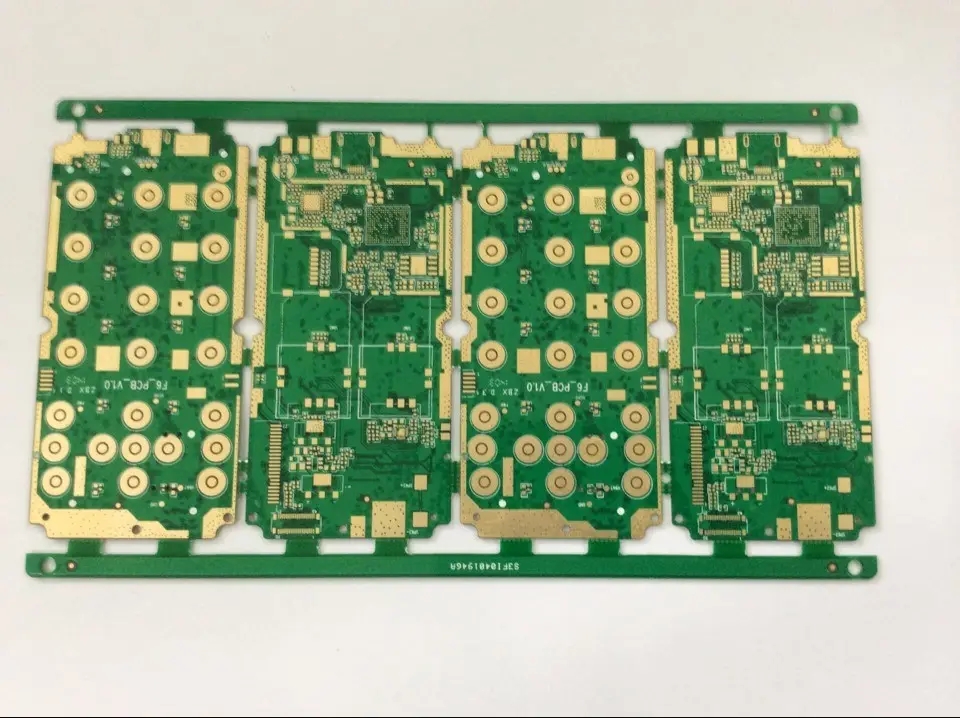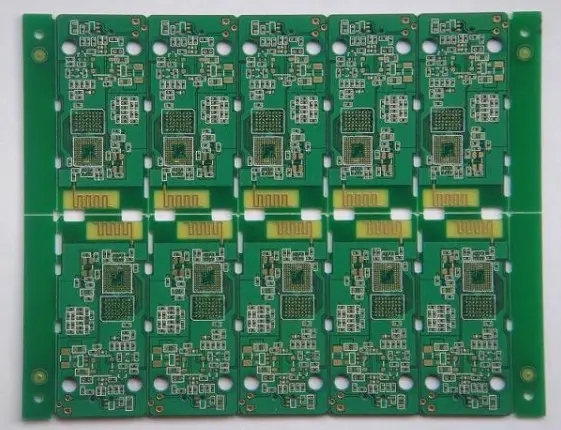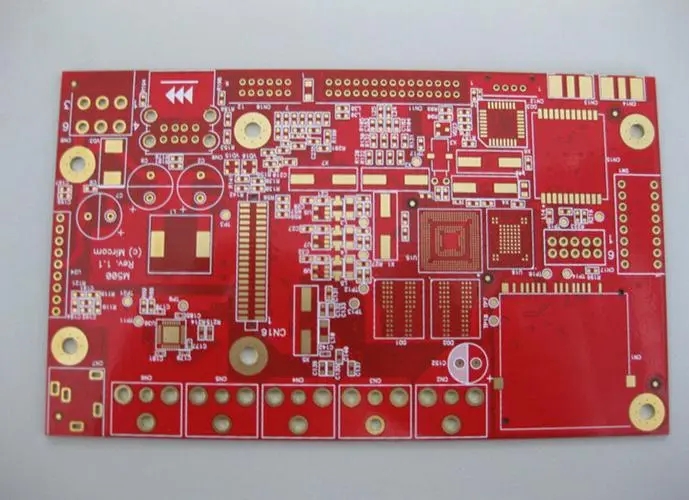
What is the SMT red glue process? When will it be used? What are the limitations?
What is the SMT red glue process? In fact, the correct name should be SMT dispensing process. Because most of the glue is red, it is commonly known as red glue. In fact, there is also yellow glue, which is the same reason that we often call the "solder mask" on the surface of the circuit board "green paint". There is a red gel like object below and in the middle of these small parts, such as resistance and capacitance. This is the red glue. It was originally designed to stick the parts to the circuit board, and then let the circuit board pass through the wave soldering furnace, so that the parts can be stained with tin and connected with the solder pad on the circuit board, without falling into the hot wave soldering furnace.
This red glue process was developed because many electronic parts could not be transferred from the original plug-in (DIP) package to the surface mount (SMD) package at that time. Imagine a circuit board with half of the DIP parts and the other half of the SMD parts. How can you place some parts so that they can be automatically welded to the board? Generally, all DIP and SMD parts are designed on the same side of the circuit board. SMD parts are printed with solder paste and then welded back to the soldering furnace. As all solder legs of the remaining DIP parts are exposed on the other side of the circuit board, all DIP solder legs can be welded together at one time using the wave soldering furnace process.

Later, a clever engineer came up with a way to save the space of the circuit board. He tried to put parts on the side where there were only DIP parts but no parts. However, most DIP parts could not be placed on the side where the board passed the tin furnace because the body had too many gaps or the part materials could not withstand the high temperature of the tin furnace. However, the general SMD parts were designed to withstand the reflow temperature, Even if the SMD is immersed in the wave soldering furnace for a short period of time, there is no way to let the SMD pass through the wave soldering furnace because the temperature of the tin furnace must be higher than the melting point of the solder paste, so the SMD parts will fall into the tin furnace slot because of the melting of the solder paste.
Of course, later some engineers thought of using thermosetting adhesive to stick SMD parts. This adhesive needs to be heated to solidify. It can just be used in a reflow furnace, which can solve the problem of parts falling into the tin bath. As a result, red glue was born, so the size of the circuit board was further reduced. The picture above shows that the SMD is marked with red glue through wave soldering furnace and the pin pin of DIP coexist on the same side of the circuit board.
The reason why the thermosetting red glue is used is to prevent the cured glue from melting again when it flows through the wave soldering furnace, thus losing the purpose of using red glue. So if you ask, "Can red glue be reused like solder paste?", the answer is no.
Is it possible to apply red glue to all SMD parts through the wave soldering furnace? Unfortunately, only some IC parts with double rows of legs extending outward or parts with solder pads at both ends (such as resistance and capacitance) can go through the wave soldering process. General connectors or parts with gaps cannot go through the wave soldering process, because the tin solution will pollute the contact points or affect the characteristics of the parts, and too small parts (below 0402) will be unable to go through the wave soldering furnace because of the short circuit of tin caused by too small spacing.
How is the red glue placed on the circuit board? In the early days, when the red glue process was prosperous, a special dispenser was installed on the SMT line to add red glue. During that period, there were occasionally double processes of red glue and solder paste, which were designed to reduce the shadow effect during wave soldering. Later, most electronic parts were gradually changed to SMD packaging, and most dispensing machines were removed from the SMT line. When red glue was occasionally needed, steel plate printing could also be used, but there was no way to print solder paste and red glue at the same time. However, the method was devised by some people. Some people also used thick steel plates to dig air raid shelters where solder paste was originally printed, and then printed red glue, which was just troublesome.
What else can red glue do besides fixing parts by wave welding?
Because the red glue has a good fixing effect, it is sometimes used to strengthen the ability of parts to fix on the circuit board. For example, some engineers want to use red glue to enhance the strength of some parts when they fall during the falling test; Sometimes customers complain that some external connectors are easy to be pushed off, and some engineers want to use red glue to reinforce them; It has also been seen that some engineers use red glue dots at the four corners of BGA to reduce the defective rate of tin cracks; Again, because the current circuit board is already a double-sided SMT process, if some heavy parts are placed on the first side, they will fall due to gravity when passing through the reflow furnace for the second time. The risk of parts falling can be avoided by clicking red glue in advance.
However, most of these processes using red glue can only be classified as "short-term countermeasures". In terms of production efficiency, adding a process will increase a certain amount of working hours, that is, increase costs. The long-term countermeasure is to use the design method to remove this red glue.







